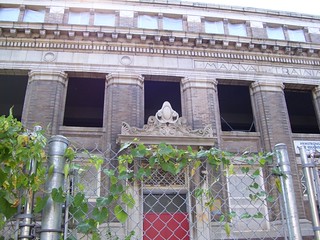Friendship PCS- Armstrong Elementary
1400 1st St. NW or 111 O St NW
Type of school: Public Charter
Grades: PK3-5 (Note: Middle School for 2020 grades 4-8)
Before & After School care: Yes. Contact school. Prob. $70 a week for before and after care.
Enrollment: 417 (2019-20)
—PreK3: 55; PreK4: 72; K: 63; 1st: 40; 2nd: 65; 3rd: 38; 4th: 37; 5th: 47
PCS LEA 1 Programmatic Capacity: 900; Unfilled seats 499 (2018-19)
Cost Per Pupil- No figures found. Apparently those numbers will be available later in 2020 or 2021.
Attracts Students From These DCPS schools (2017-18), 10 students or more
| Name of School | # of Students |
| Thomas Elementary School | 17 |
| Truesdell Education Campus | 10 |
| Walker-Jones Education Campus | 88 |
| Browne Education Campus | 23 |
| Langley Elementary School | 15 |
| Seaton Elementary School | 36 |
| Cleveland Elementary School | 13 |
Physical activity: Grades K-5: 65.00 Minutes/week
| PARCC Scores 2018-19, % meeting & exceeding expectations | |||||
|---|---|---|---|---|---|
| Black | White | Hispanic | Pac. Is/Native Am. | ||
| ELA 2018-19 | 9.2% | n<10 | n<10 | n<10 | |
| Math 2018-19 | 22.9% | n<10 | n<10 | n<10 | |
| Males ELA | 7.3% | n<10 | n<10 | n<10 | |
| Males Math | 18.2% | n<10 | n<10 | n<10 | |
I chose the picture of Armstrong before it was renovated. Friendship is the second charter school to take over the building. I almost feel that I should have a photo of the Langston school to show the importance of charters on the neighborhood. However, Langston is so far long gone no charter, no matter how well funded, isn’t going to touch it, unless the neighboring Slater building comes with.
I should write about the program. As the mom of a toddler, I should point out this is one of the few (the only I found) charters that seems forgiving when it comes to potty training. KIPP and Mundo Verde demand that students be potty trained.
They will have an open house on
Sources:
https://www.myschooldc.org/schools/profile/150
https://www.dcschoolreportcard.org/schools/120-0269
Copy of EdScape_Chapter 3 Facilities_Facility Enrollment and Utilization_6
2018-19 School Year Annual Enrollment Audit Report Supplemental Tables
Detailed 2018-19, 2017-18, 2016-17 PARCC And MSAA Performance


